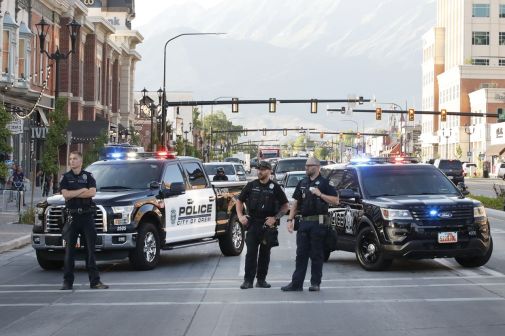California’s extended pause on next-generation 911 project raises concerns

California’s yearslong next-generation 911 rollout has been marked by safety concerns and delays, with some dispatch centers experiencing outages, misrouted calls and busy signals. The California Governor’s Office of Emergency Services has since last November been re-evaluating the project by focusing on improving technology and processes, and is planning to open new contracts by the end of the year.
While the agency’s goal was to complete the statewide migration by 2021 or early 2022, according to a 2017 proposal, only 23 of the California’s more than 400 public safety answering points have been outfitted with NG911 technology, which allows 911 callers to send voice, photos, videos and text messages to first responders for improved information sharing and situational awareness.
In January, California state Sen. Marie Alvarado-Gil penned a letter to Nancy Ward, director of Cal OES, which houses the state’s 9-1-1 Emergency Communications Branch, questioning the reasoning behind the monthslong delay. Her letter references Tuolumne County, which contains parts of Yosemite, the first dispatch center in the state to go live with NG911 in 2021. It experienced an outage last year in which residents couldn’t call 911 for twelve hours. She said incidents like these raise serious questions about the reliability and safety of the new system.
“Implementation of Next Gen 911 was originally scheduled to be completed statewide and the legacy system fully decommissioned by the end of 2022,” Alvarado-Gil’s letter read. “I am concerned about the most recent deployment delay, as it it is layered on top of a series of delays that have pushed the project well beyond its original timeline.”
In November, Cal OES formally paused the NG911 deployment initiative, pending an assessment of the project, which has cost nearly half a billion dollars. After the California 911 Advisory Board met in February for an executive session, Cal OES announced that the deployment would remain paused through spring of this year, as the office conducts a review.
In response to the scrutiny, Walter “Budge” Currier, who served as assistant director for public safety communications in California’s Office of Emergency Services for 13 years, last week published an open letter defending the state’s decision to delay, claiming the transition to a new emergency communication network is still on track.
The three-page letter, posted to LinkedIn, offered explanation for the delays in the state’s transition, and defends vendor choices, emphasizing that California’s next-generation 911 system is “designed for high reliability and future adaptability.”
“After retiring, I chose to remain silent during these information exchanges so that the leaders, PSAPs, 9-1-1 first responders, and the entire 9-1-1 community could move forward unencumbered by any outside commentary,” Currier wrote. “As time went by, I found many asking me what happened, and some were starting to wonder if deploying a fully compliant, standards-based NG 9-1-1 system was even possible. Because of these doubts, and to better inform the record, I am choosing to break my silence and provide some accurate insight into California’s NG 9-1-1 system deployment.”
In his letter, Currier states that despite challenges like the COVID-19 pandemic, which disrupted supply chains and collaboration, significant milestones have been achieved, including a fully operational statewide emergency services IP network, with no outages in more than three years, a “high-reliability” NG911 system with backward compatibility and the availability of text-to-911 services. He said the state remains committed to building a robust, adaptable emergency response infrastructure.
Currier claims in his letter that he had “retired” from his position, but NBC Bay Area reported in November that the Cal OES let him go last August, months before the agency announced the delay. Currier did not respond to requests for comment.
Delays and reviews
According to the Cybersecurity and Infrastructure Security Agency, California’s 438 PSAPs support more than 28 million calls annually. The centers, which are located across diverse geographic landscapes, are crucial for handling emergency calls and coordinating responses, especially during natural disasters like the recent wildfires in Los Angeles.
In his letter, Currier claims that the state’s NG911 system was built to avoid single points of failure, drawing lessons from past statewide outages in other states. He writes that the system uses modern, interoperable technologies to ensure it can be updated over time, preventing the obsolescence issues faced by the state’s old 911 system.
Cal OES spokesperson Anita Gore told StateScoop the agency is committed to the “successful implementation of an NG 911 system that works for the public safety officials and is reliable and supports public safety efforts statewide.”
“The infrastructure to support the NG 911 network—including structural and electrical work, software, hardware, and trenching needed to accommodate underground fiberoptics—has already been installed across the state,” Gore wrote in an emailed statement.
Gore said Cal OES has visited the 23 PSAPs in the state that have transitioned to NG911 to get “a real world view” of their experience, reviewing the technology and its implementation to date.
“The review informs our path forward regarding system enhancements, policy updates and further deployment of the NG 911 system statewide” Gore wrote.
She added that Cal OES has conducted several reviews of the technology behind the state’s NG911 upgrade, and its impact on dispatchers and the public who rely on 911 services. The pause in implementation to conduct this review allows the agency to “set a course of action that meets the needs of Californians.”
Vendors
In 2019, Cal OES announced four contractors – Atos, CenturyLink, NGA 911, and Synergem Technologies – to build its NG911 system.
It took longer than anticipated to integrate the vendors’ different equipment into the same network, an issue further exacerbated by supply chains overburdened by the COVID-19 pandemic. In 2023, Currier defended the multivendor strategy.
“You’re bringing a brain trust of experts together that are really designing a unique solution that we would not be able to do had we done it just with ourselves or with a single vendor,” he told All Things FirstNet.
Currier’s letter insists that the vendor selection was based on a rigorous process, including dedicated lab testing to ensure compliance with California Public Utilities Commission requirements, and a robust infrastructure for receiving and transmitting calls.
Among the project’s subcontractors was Rave Mobile Safety, which the state selected in 2022 as its provider for emergency mass notifications. The platform enables critical data sharing, mass notification and emergency response coordination.
Also in 2022, Cal OES published a report outlining necessary steps to successfully implement the new emergency communications system, including defining system requirements, adopting a robust technical design and establishing a clear timeline for project management.
Gore said that based on feedback from PSAPs, vendor partners and other state partners, Cal OES expects to execute new contracts to continue NG911 deployment. The new contracts will allow the agency to improve requirements, focusing on technology and process improvements, that will ease the transition process and improve ongoing support services, with no fee increase required.
Cal OES has not provided a timeline for resuming the deployment of the NG911 system. The office says it’s working with the California Department of Technology to establish a procurement to support the project and will develop a request for proposals in the coming months.
Editor’s Note — May 22, 2025: Additional information was added about the vendor selection process.






